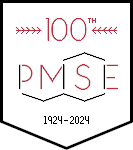PMSE History
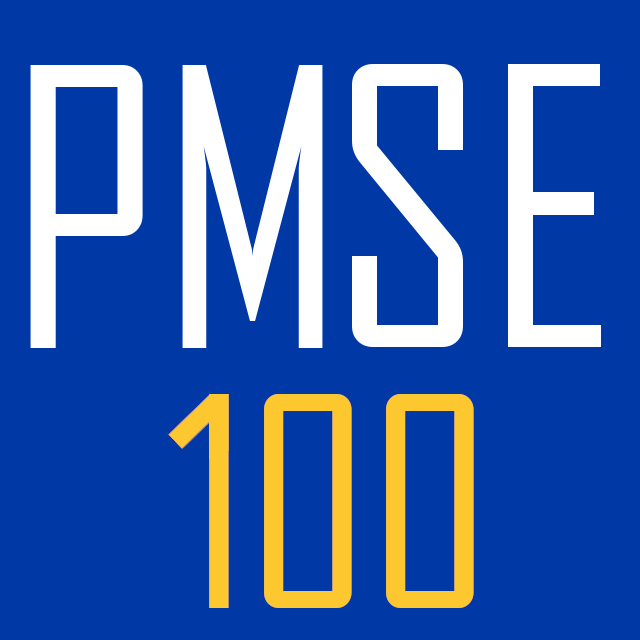
PMSE celebrates its 100th anniversary in 2024.
The Polymeric Materials: Science and Engineering (PMSE) Division of the American Chemical Society (ACS) has been through many names throughout its 99 years of history. This page covers some of the key points which made the division as it is today. Documentation comes from a variety of sources, including:
- Sward, G.G., “The Division of Paint and Varnish Chemistry.” Industrial and Engineering Chemistry, News Edition, 1939: 17.
- Craver, C.D., and Carraher, C.E, eds. Applied polymer science: 21st century. Elsevier, 2000.
- Craver, C.D., Carraher, C.E., McSweeney, E. E. “History of the American Chemical Society Division of Polymeric Materials: Science and Engineering.” Appl. Polym. Sci. (2000): 3.
- Bragdon, C. R., Renfrew, M. M. “Paint, Varnish, and Plastics Chemistry” Industrial & Engineering Chemistry, 1951.
Thanks to the North Dakota State University Archives, Lehigh University Archives, and archive.org for various scans of 1910s and 1920s files that supplied images which help tell the history of PMSE. These publication are prior to 1928 and currently off copyright.
Foundation
PMSE was founded in 1923 as the Paint and Varnish Section, holding it’s first meeting in 1924 at the 67th annual national meeting in Washington DC. The Division was formed through sustained interest, with the original 1924 meeting rooms being too small to hold the number of people interested in the session content. The division was setup based on the work of Henry A. Gardner (bottom right) and W.T. Pearce (bottom left).
Henry Gardner worked for the Institute of Industrial Research in Washington D.C. The institute worked with standards agencies, industry, and public sources to explain various new field of technology to the public. A variety of his reports and publications are still available, with the most public access available on archive.org. The main page of the PMSE website has featured a collection of paint failures from his early publications on paint testing methods. Henry Gardner also helped identify the available location of the current ACS building in D.C.
Prof W.T. Pearce, of North Dakota Agricultural College (now North Dakota State University) was an accomplished paint and varnish researcher, with numerous publications in the 1910s and 1920 on coatings for a variety of end use applications. The North Dakota State University Coatings and Polymeric Materials program was founded through the work of Prof. Pearce and countless others throughout the last 100 years.
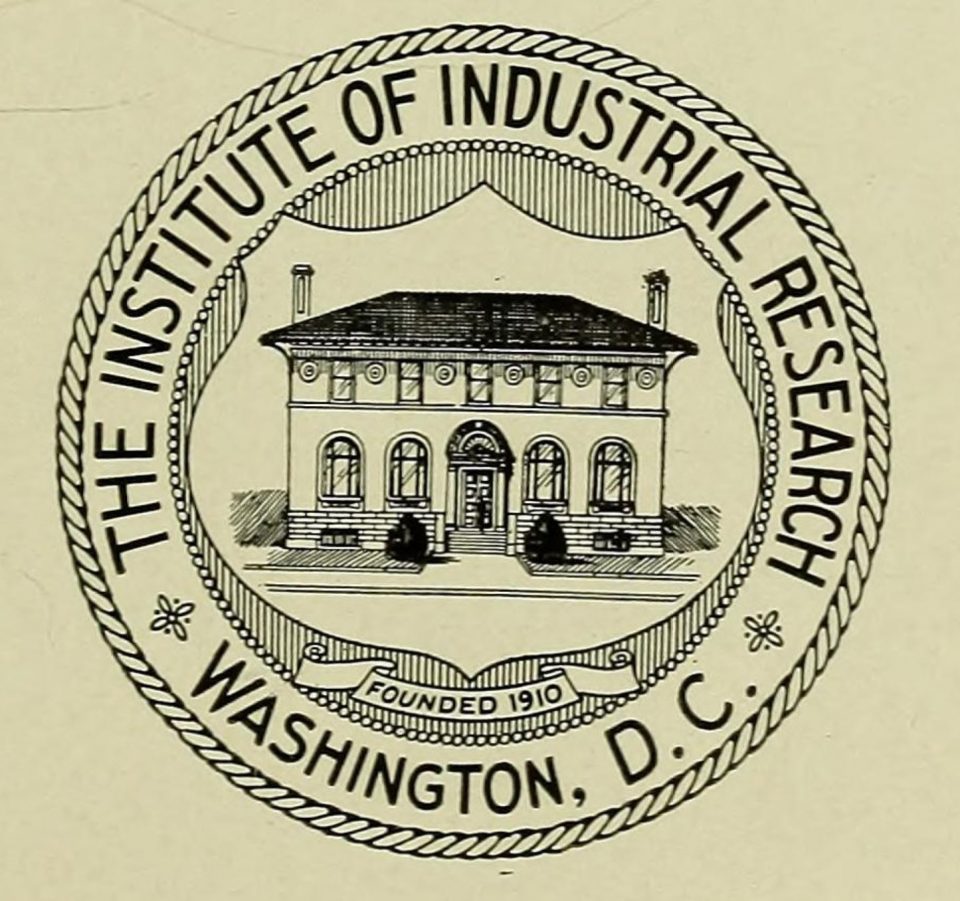
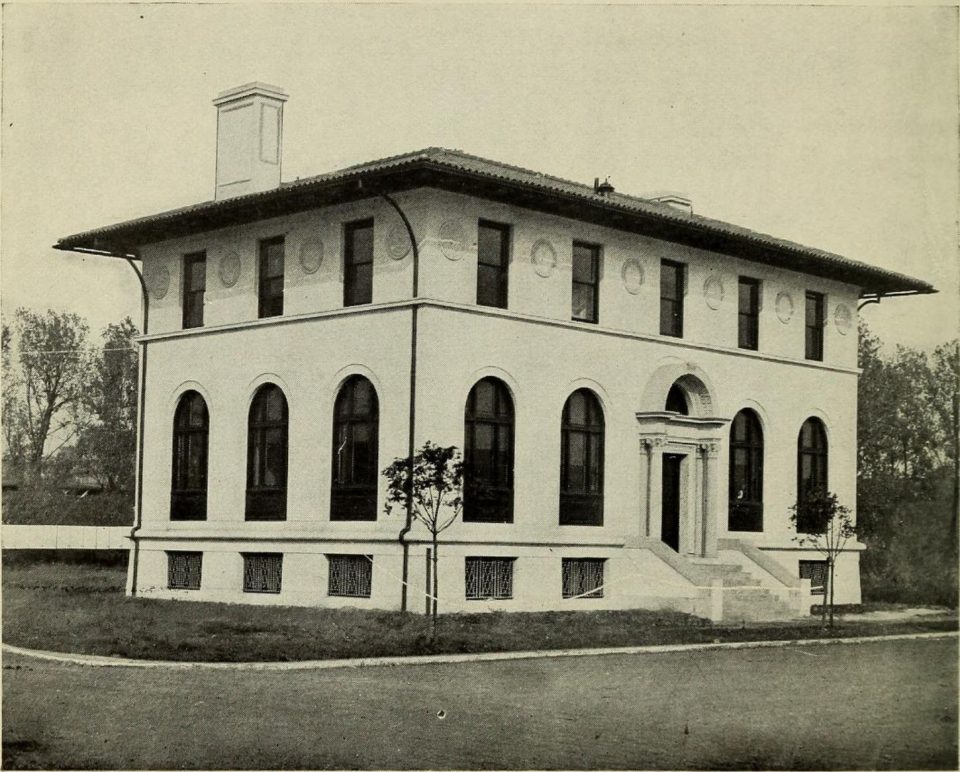
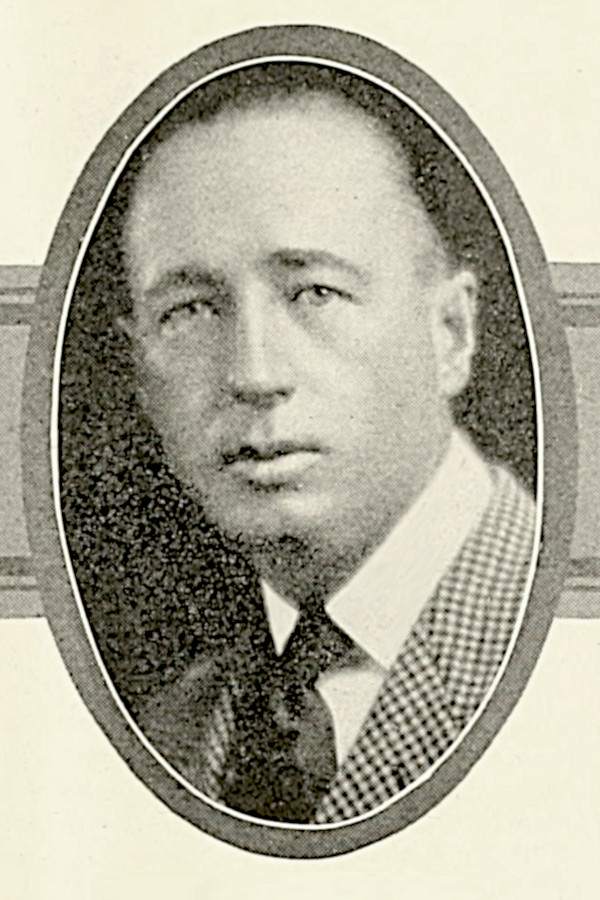
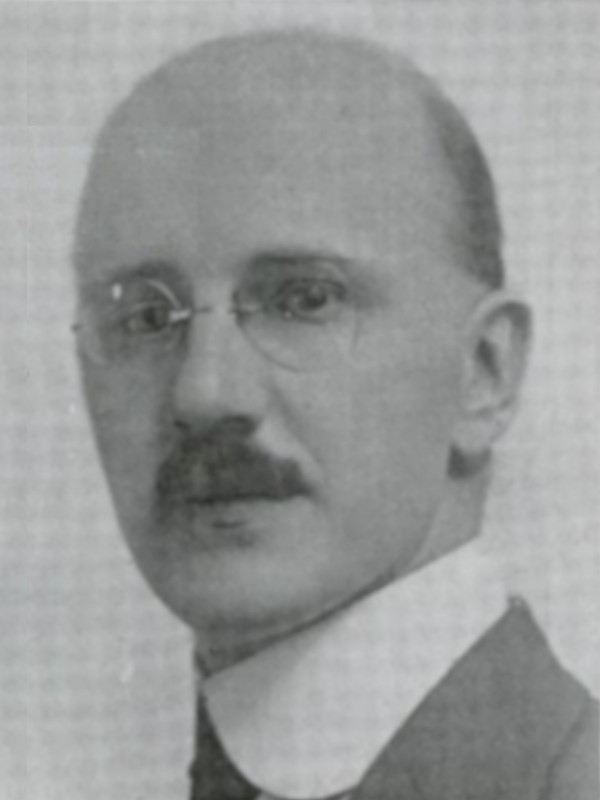
The Institute of Industrial research logo and building
Henry A. Gardner (left) with W.T. Pearce (right)
A 1922 meeting was organized by the Scientific Section of the National Varnish Manufacturers Association and the Paint Manufacturers of the United States to bring together paint chemists on mutual problems and facilitate discussion. During these meetings, it was suggested that this work be affiliated with the American Chemical Society due to their reach and publication efforts.
In October 1923, W.T. Pearce sent a petition to ACS with approximately 100 signatures, requesting a Paint and Varnish Division be formed within ACS. In December 1923, the petition was accepted with Henry A. Gardner as president and W.T. Pearce as Secretary.
The first meeting was held in Washington D.C. on May 10, 1924. The convention registration fee was $3.00 and division meetings were held at the D.C. Central High School. The conference included such extra activities such as excursion to Chemical Warfare Service demonstrations. The meeting was the largest ACS national meeting to date, with the Paint and Varnish seminar at standing room only.
Paint, Varnish, and Plastic Chemistry Division (1940)
In 1940, a large amount of common commodity plastics were commercialized an introduced into the market. Polystyrene, polyamide (as Nylon), polyvinyl chloride (PVC), acrylics, and poly vinyl acetate were all introduced in the first 15 years of the Paint and Varnish Division foundation. Since paints and varnishes were the closest adjacent chemical division at ACS, a large number of polymer manufacturers became interested in leveraging the same discussion groups that had served the coating industry.
In 1937, plastics had become an equal partner in the division, with two co-chairs until the name change in 1940. The division presidents of the time were from companies that are recognizable names today: Dow, Dupont, Celanese, and Sherman-Williams.

In 1946, a High Polymer Forum was developed and launched for National Meetings across the multiple divisions interested in macromolecular design and chemistry. Paints had transitioned from organic materials into alkyd and phenolic formulations, with a massive shift to replace lead pigments as safer alternatives became available. This shift would continue through the 1950s until the eventual ban in all paints and coatings.
With the success of the High Polymer Forum, a new division was proposed to focus on the synthesis of macromolecules. The Division of High Polymer Chemistry, currently known as the Polymer Chemistry Division (POLY), was approved in 1949, with its first sessions at the ACS national conference in 1951. Both divisions continue to collaborate and host joint symposium and award ceremonies.
Between 1940 and 1960, the division tripled in size, expanding both the number of sessions and the number of presentations at each national meeting. The oldest divisional award, the Arthur K. Doolittle Award, was established in 1953 with an endowment from book royalties. The Doolittle Award recognizes an outstanding presentation during a PMSE symposium at each national meeting.
Division of Organic Coatings and Plastics Chemistry (1960)
In the 1960, the division requested a name change to reflect that paints and varnishes could be classified as organic coatings, reflecting the complexity of new coatings needed for aerospace, industry, and home use. Coatings had quadrupled in dollar sales from 1940 to 1960.
While coatings grew 4x, plastics exceeded that by even more. New polyesters, polycarbonates, polysulfones, Kevlar polyaramids, and polyimides enabled everything from consumer household appliances to space exploration. Plastic consumption per person was only 1.5 pounds kg per person in 1940, growing to 31 pounds by 1960 and 90 lbs by 1970.
Some of the major commercialized resin will be highlighted here throughout the year as we recognize the impact a variety of polymers have had on the world we live in.
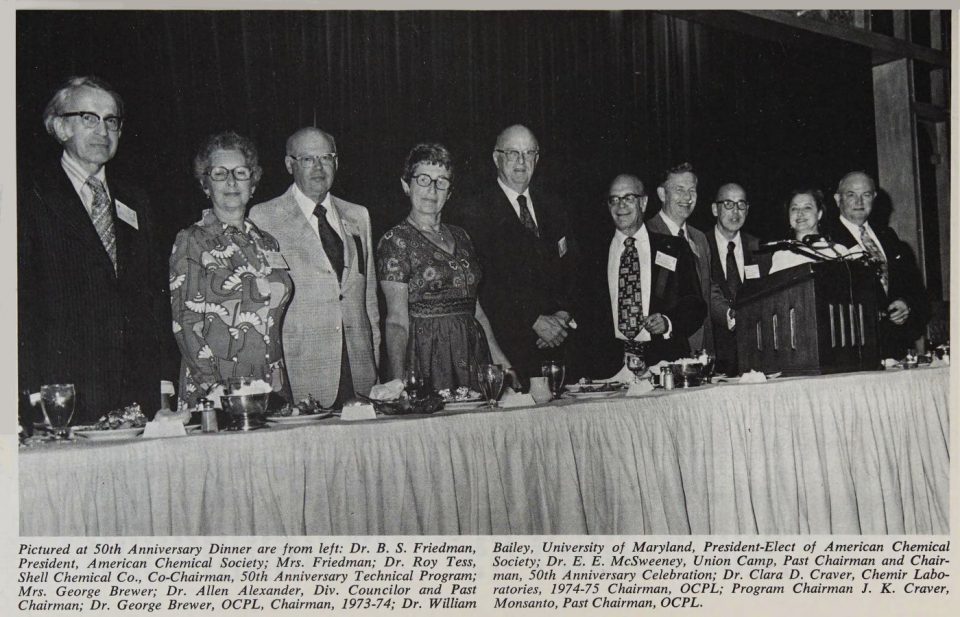
Polymeric Material: Science and Engineering Division (1982)
Over the years, the interests of the Division’s members have come to include adhesives, biomedical polymers, composites, polymers for electronic applications, plastics, and many other areas of applied polymer science and technology in addition to traditional coatings-related topics. The name was changed in 1986 to better reflect the division’s focus on the nexus of polymeric materials, science, and engineering.
Polymer complexity has increased with better control over structure and architecture, allowing unexpected properties through the selective use of catalysts and processes to build new structures or property profiles. These changes are highlighted in PMSE symposium on a yearly basis at ACS National Meetings. Over 90 symposium sessions have been translated into books on a variety of plastic engineering, application methods and uses.
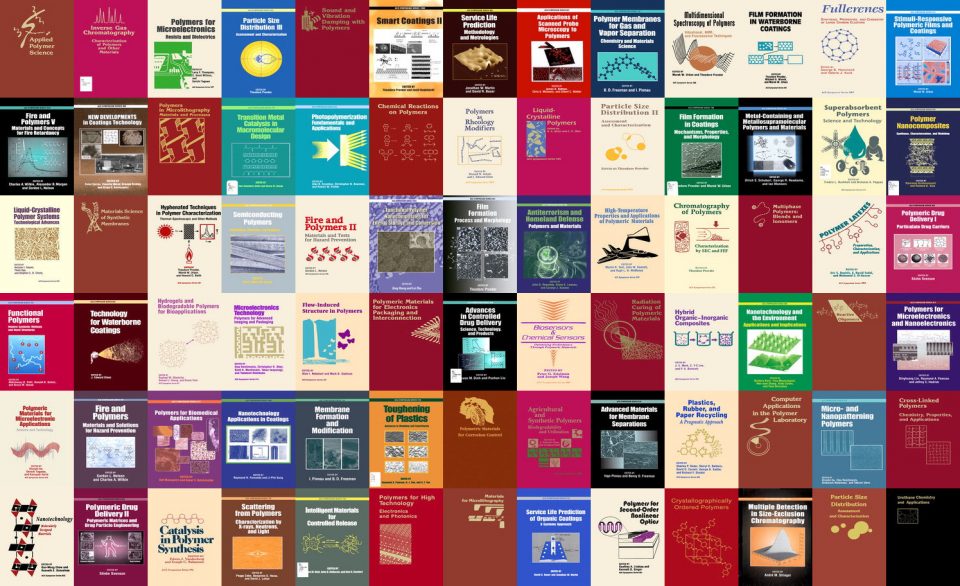
A number of new awards were inaugurated for both graduate studies, early stage career professionals, and to honor lifetime contributions.
The earliest of these were the Outstanding Graduate Research in Polymer Science and Engineering Award (now sponsored by Henkel) and the Student Award in Applied Polymer Science (now sponsored by Eastman Chemical) in the 1980 and 1990s, with additional rewards honoring outstanding thesis work and travel support for ACS presentations.
The PMSE Future Faculty Symposium and Early Investigator Symposium were developed to highlight early stage success, with honorees chosen from postdocs who have made significant contributions to their respective fields within polymer materials science and engineering and early-career emerging leaders who have made significant contributions in their respective fields within polymer materials science and engineering. The PMSE Fellow Program was started in 2000 to honor PMSE Members for scientific and technological contributions to polymer material science and engineering.
The Future
Organization change over time to adapt to the member needs. The PMSE Division has responded to changes through inclusion of related fields and opportunities from the paint and varnish focus which drove its foundation in 1924.
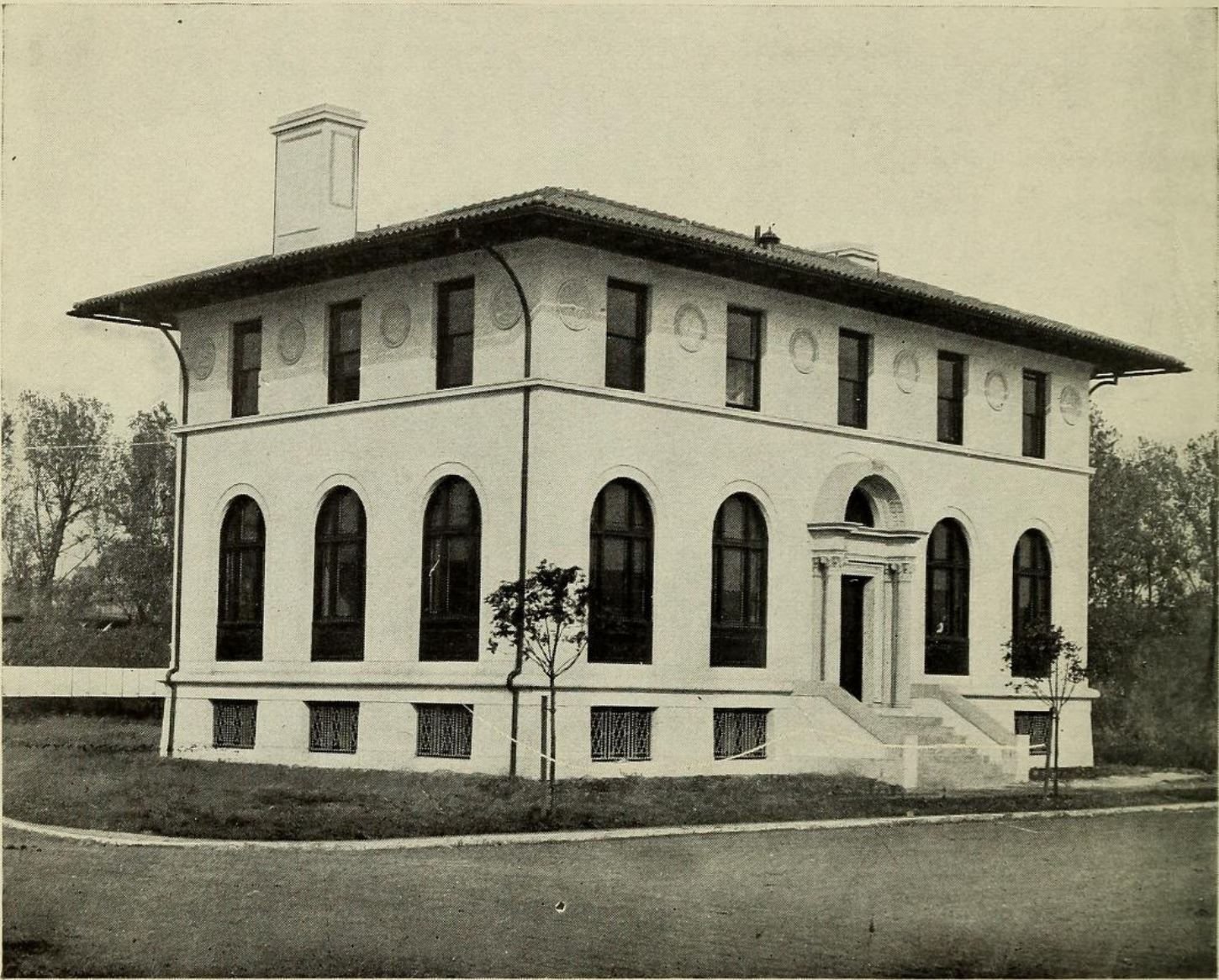
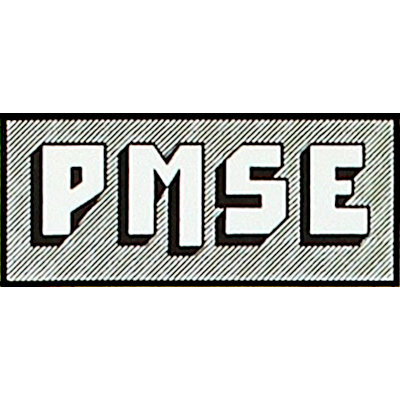
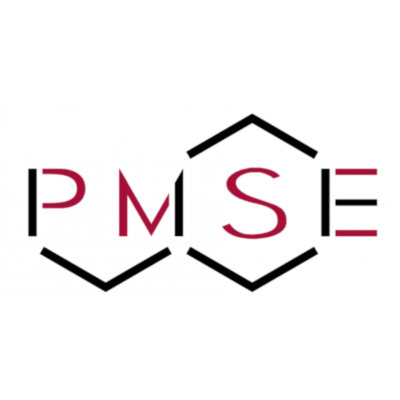
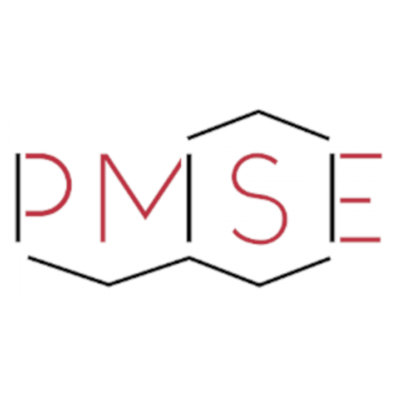
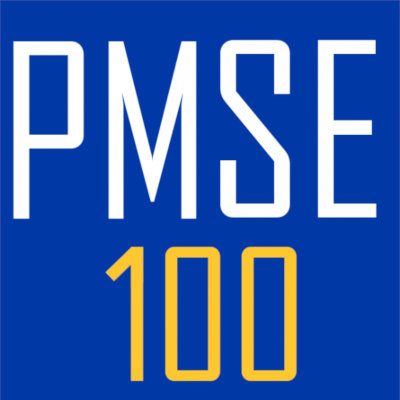
Your participation in the future of PMSE is needed and encouraged to ensure the division remains responsive to the needs of applied polymer science.
Core Principles
MISSION
To provide a polymer-based forum for the exchange of technical information and foster interactions in materials science and engineering.
VISION
A community of polymer scientists and engineers equipped to solve global challenges.
KEY STRENGTHS
- Adaptive technical programming at the cutting-edge of polymer science and engineering
- Access to global network of experts in polymer science and engineering
- Dedication to the career development of all members
